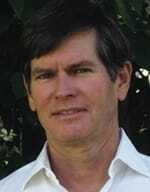Contributing their insights are Richard Albrecht, principal of Lattice Properties LLC in Park City, Utah, and former chair of the Recreational Development Council (Blue Flight); Randy Banks, president and CEO of Mountain Air Development Corporation in Burnsville, North Carolina, and chair of the Recreational Development Council (Gold Flight); Chris Chaffin, vice president of development at Chaffin/Light in Beaufort, South Carolina, and former chair of the Recreational Development Council (Silver Flight); Patrick Fitzgerald, chief executive officer at Hualalai Resort and Kona Village Resort in Hawaii and a member of the Recreational Development Council (Red Flight); Donna Haynes, president of Heartbeat Marketing in Burnsville, North Carolina, and a member of the Recreational Development Council (Gold Flight); and Mark Lunt, principal, transaction advisory services, real estate/hospitality, Ernst & Young LLP, in Miami, Florida, and chair of the Recreational Development Council (Silver Flight).
The economic downturn and recent economic uncertainty have hit the resort and recreation development sector hard. How do the prospects look now?
| Mark Lunt Chris Chaffin |
Mark Lunt:
The hospitality sector fell precipitously in terms of industry performance in 2009—probably twice as far as it did during [the period after] 9/11, with less business travel and more people pulling back on discretionary vacation spending. The for-sale product all but came to a grinding halt. There’s a landscape of broken deals as the larger lodging operators faced many challenges related to residential hybrids like timeshares, fractionals, and branded residential. On the flip side, there has been little new development. So right now we’re seeing occupancy growth and little rate growth. As occupancies improve, rates will rise, and then developers will start building hotels again. As we get into 2013 through 2015, the hospitality industry should see strong growth in RevPAR [revenue per available room] performance and values.Chris Chaffin:The speculative investors are mostly gone at this point. There’s a whole segment of the baby boomer demographic that doesn’t feel like they’ll be able to purchase the second home that they had intended to purchase. But there is still a segment of the baby boomers that feels comfortable they have enough discretionary income to live comfortably. And once they hit a certain life event—whether it’s kids graduating from college, or retirement, or something else—they become focused on the time they have left to enjoy themselves.
Randy Banks:There’s a big crisis of consumer confidence right now. I’m not optimistic that the confidence is going to return significantly in the next 12 months. Inevitably, some tough decisions on the economy will be delayed until after the 2012 election. Ski resorts—particularly in locations where it is difficult for new competitors to enter the market (for example, in Colorado or Lake Tahoe)—are going to fare better than resorts that are depending upon golf communities. And in general, beach resorts are going to recover perhaps a little more quickly than inland properties. But it depends on the individual market, on how much excess inventory remains to be absorbed. That varies quite a bit from place to place.
How have consumers changed the way they make their buying decisions?
Patrick Fitzgerald:When people are vacationing now, they are engaging in a risk-management assessment. If they had a great experience at a property or resort, they’re more likely to go back, whatever the cost, rather than try a new destination. Also, more buyers are looking for preservation of capital in their purchase of resort real estate than the spec real estate purchasers who were trying to make 8 or 10 percent per year. Buyers want to be more confident that what they buy now is going to remain the same value or hopefully increase [in value] over the next ten years or so. The spec buying has ceased in the resort market. Resort developers/owners need to show potential buyers not only the quality of the resort in every aspect—physical plant, service, people—but also that the property is financially sustainable and will be there ten, 15, 20 years from now.
Chaffin:Before the financial crisis, many buyers were focused on creating a residence that would be an expression of themselves—their ideal home. Now people are looking for more immediate gratification, something that they can instantly enjoy. They’re willing to have something that is smaller, a little more pragmatic; they don’t want to sacrifice on quality or livability, but they aren’t going for some of the more grandiose elements of the homes built in 2007. It’s too early to say if the trend toward smaller homes is a permanent one. It may be, but it may just be a segment of the market.
Richard Albrecht:There is a subset of consumers who just want to buy new product. They don’t want to buy a resale. So even at a time when we have an oversupply of existing product on the market, there is the subset of buyers who say, “I want something new.” And they’ll pay for that, but they’re very demanding right now. It has to have a nice level of finish.
| Randy Banks |
Banks:
Consumers are doing a lot of their own due diligence in ways that really bypass the developer and direct marketing efforts; instead, they’re turning to blogs and social media. Also, their criteria have changed. Up until about three years ago, people considered second homes to be a good economic investment. People thought they’d always make money when they sold it. And I don’t think that belief is out there now. So now the decision-making process has to be much more focused on other value propositions: Is it the right fit for my family? Does it offer the right mix of relevant programs and amenities?Donna Haynes:In this economy, people are making trade-offs in their lives, and a vacation home is something they would like to have, but it’s not a “must-have.” So the resort industry has to figure out some way to be more relevant to people’s lives to make it a must-have. Even in this down economy, parents will spend money to give their children better lives. When making a purchase, consumers are asking themselves how it will impact the quality of time they have with their children. So resorts have to show how owning a home in one of these places is going to help improve their lives.
What new residential product types are emerging, or what old ones are fading?
Fitzgerald:I hear a lot of people saying to me that buyers are looking for smaller homes. We’ve built a couple of small homes that have been successful, but we have also had several builders construct larger spec homes recently that are selling. There is some information that suggests people are trying to maximize the potential for renting their units more than they have before.
Lunt:The business model for second-home hy-brids like condominium-hotels and fractionals has been a casualty of this cycle. They tend to work only in markets in which the cost of lodging and the cost of second-home real estate alternatives are high. Even then, they’re a highly complex asset class that probably fails in more locations than they work. They have high carrying costs, and hotels are hugely management and capital intensive and tend to rent contrary to sale patterns. I think we’ll continue to see fractionals and condominium-hotels, but only as a smaller component of a mixed-use project.
What other challenges are affecting this sector?
| Richard Albrecht Patrick Fitzgerald |
Albrecht:
Now more than ever, we see a very high cancellation rate on purchases—as high as 50 percent, which is extraordinary. It’s always been the case that people get home and think, “What have I done?” but not to the extent that we see now. Even if they get a good buy, even if they like the property, they still don’t have that financial confidence. So maintaining that relationship with the consumer shortly after the purchase is something that successful projects have to figure out how to do a better job with—keeping [the buyer] thinking about the benefits of proceeding with the purchase.Fitzgerald:It’s much harder to sell lots than it is to sell finished product. The idea of building your dream home in a resort location is less in demand than buying a resale property, where you can get a great value; you’re accepting that it has 80 or 90 percent of what you want rather than 100 percent. Lot sales are going to lag [the sales of] built product for the next couple of years until there is more absorption of existing inventory, and until people see that construction costs are coming down and there’s an opportunity to build something for less than for-sale cost.
Banks:In purchasing a vacation home, there’s a lot of complexity in the decision-making process. And oftentimes, there’s a lot of complexity in owning these properties: if you’re an absentee owner, who takes care of the property when you’re not there? There’s complexity in understanding the structures of the clubs and the homeowners associations. So, how do we help simplify the decision-making process? How do we make it simple and pleasurable to live and own and operate their properties once they do make that decision?
Haynes:Women in the baby boom generation are going to have a lot of wealth—because they’re CEOs, [because] they’re widowed at a young age. So we’re going to have a lot of single women who are looking for community. A lot of industries, including the hotel industry, are focusing on businesswomen. I don’t know that the resort development industry is really focusing yet on creating unique products for this group and understanding what’s important to them—how to create social areas within neighborhoods or product types for that group. But I think there’s a huge opportunity there.
How should developers be retooling to navigate the difficult road ahead?
Lunt:One of the biggest trends I’m seeing is a return to diligence. A lot of mixed-use projects during the last cycle probably weren’t economically feasible on a stand-alone component basis, but the strong residential sales muted the failure of other components. The smart money is really kicking the tires on each component of a real estate deal to ensure that each one—hotel, residential, marina, retail, etc.—can stand on its own with market and financial support. With some of these luxury residential-anchored developments, the way to revive them is probably to knock them down and start from scratch. Some of them are being rethought as rentals, or as senior living, or as three-star hotels—at a far lower value basis.
Chaffin:There are a lot of broken projects out there, and therefore a lot of opportunities in the marketplace. The challenge is finding a project that has sufficiently evolved from a community standpoint, that has the right amenities, and that has a critical mass of existing residents who aren’t looking to sell their units. And to find [such a project] in a location that you believe is going to have long-term growth—that’s really the challenge. The existing homeowners in a community are going to be your best marketing team. So it’s important to establish a positive working relationship with that group and meet their needs—that’s critical to a successful sales and marketing effort.
| Donna Haynes |
Albrecht:Developers have to communicate to buyers that the project’s going to be there for the long haul—that they have the ability to survive and continue to deliver the services at the level that consumers see when they tour the community. They also have to reassure buyers that they aren’t going to undercut them with lower sales prices on other units at some point in the future. You have to build confidence in the marketplace with the brokerage community as well as with your existing owners and keep them feeling that you’re stable. Projects that were earlier in their life cycle when the financial crisis hit have had a harder time because it’s harder for buyers to gain confidence when they don’t see a lot of other homes up or a lot of other people around.
Haynes:Before the financial crisis, the marketing of resorts tended to focus on luxury and size. We talked a lot about the materials that went in, like granite countertops or Kohler fixtures, when really we should have been talking about what makes true luxury—craftsmanship, the artistry of making a home, not a house. The industry needs to create a different language for consumers: we need to tell the story of a handcrafted object, the details in the house that make it a home, not just the pieces that make up this object. It’s not square footage and it’s not the number of bedrooms. It’s something very specific that feels right.








![Western Plaza Improvements [1].jpg](https://cdn-ul.uli.org/dims4/default/15205ec/2147483647/strip/true/crop/1919x1078+0+0/resize/500x281!/quality/90/?url=https%3A%2F%2Fk2-prod-uli.s3.us-east-1.amazonaws.com%2Fbrightspot%2Fb4%2Ffa%2F5da7da1e442091ea01b5d8724354%2Fwestern-plaza-improvements-1.jpg)


